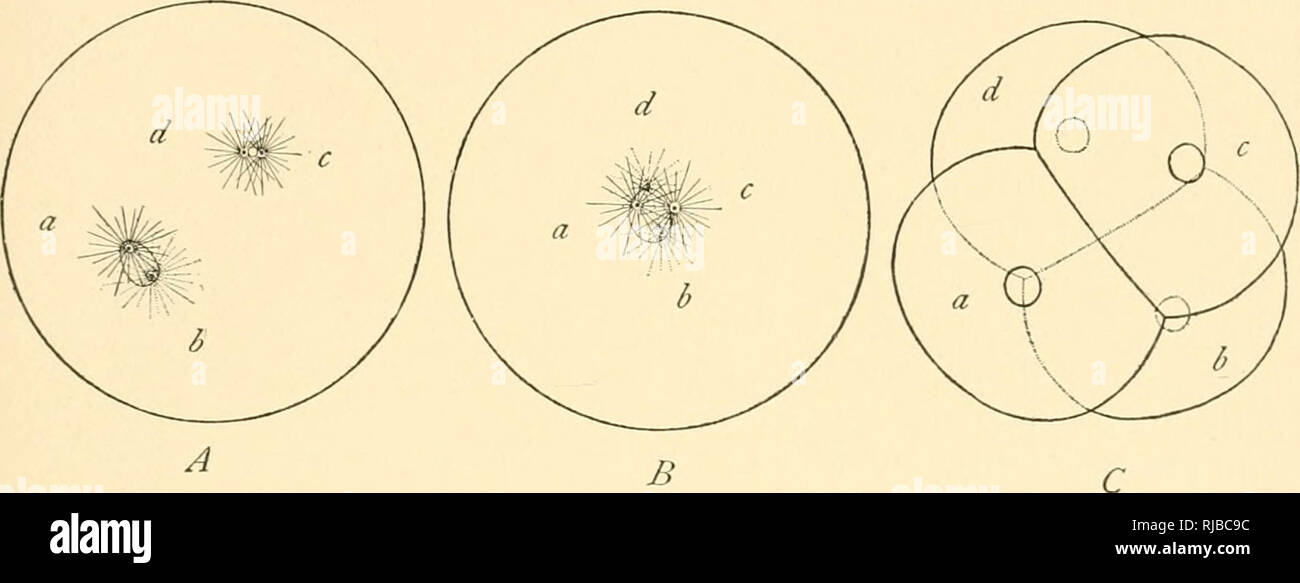. The cell in development and inheritance. Cells. SUMMARY AND CONCLUSION 261 somes of the fibres must be in some manner polarized by an influence emanating from the centrosome, but in the present state of know- ledge it would be useless to speculate on the nature of this influence. One fact, however, should be borne in mind, namely, that the centro- some differs chemically from the substance of the fibres as shown by Its staining-reactions; and this may form a clue to the further inves- tigation of this most interesting problem. The principal point in connection with our present theme is that

Image details
Contributor:
Library Book Collection / Alamy Stock PhotoImage ID:
RJBC9CFile size:
7.2 MB (145.4 KB Compressed download)Releases:
Model - no | Property - noDo I need a release?Dimensions:
2567 x 974 px | 21.7 x 8.2 cm | 8.6 x 3.2 inches | 300dpiMore information:
This image is a public domain image, which means either that copyright has expired in the image or the copyright holder has waived their copyright. Alamy charges you a fee for access to the high resolution copy of the image.
This image could have imperfections as it’s either historical or reportage.
. The cell in development and inheritance. Cells. SUMMARY AND CONCLUSION 261 somes of the fibres must be in some manner polarized by an influence emanating from the centrosome, but in the present state of know- ledge it would be useless to speculate on the nature of this influence. One fact, however, should be borne in mind, namely, that the centro- some differs chemically from the substance of the fibres as shown by Its staining-reactions; and this may form a clue to the further inves- tigation of this most interesting problem. The principal point in connection with our present theme is that the centrosome cannot be regarded as taking any important part in. Fig. 118. —Cleavage of dispermic egg of Toxoptieustes. A. One sperm-nucleus has united with the egg-nucleus, shown at <^. ^; the other lies above Both sperm-asters have divided to form amphiasters («, b and ., d). B The cleavage nuc^eu^ formed by unton of the three germ-nuclei, , s surrounded by the fo^r asters. C. ResJt of the fi.^ cleavage, the four blastomeres lettered to correspond with the four asters. the general metabolism of the cell, nor can it be an organ of inheri- tance ; for on the one hand it is absent or so small as to be indistin- guishable in many actively metabolizing cells, such as those of the pancreas or kidney, or the older ovarian eggs, and, on the other hand in fertilization it may be derived from one sex only. The conclusion regarding inheritance would not be invalidated, even if it could be positively shown that in some cases both germ-cells might contribute a centrosome; for a single case of its one-sided origin would be con- clusive, and many such are actually known. D. SUMM.-XRV AND CONCLUSION All of the facts reviewed in the foregoing pages converge, I think to the conclusion drawn by Claude Bernard, that the nucleus is the formative centre of the cell in a chemical sense, and through this is the especial seat of the formative energy in a morphological sense. That the nucleus h